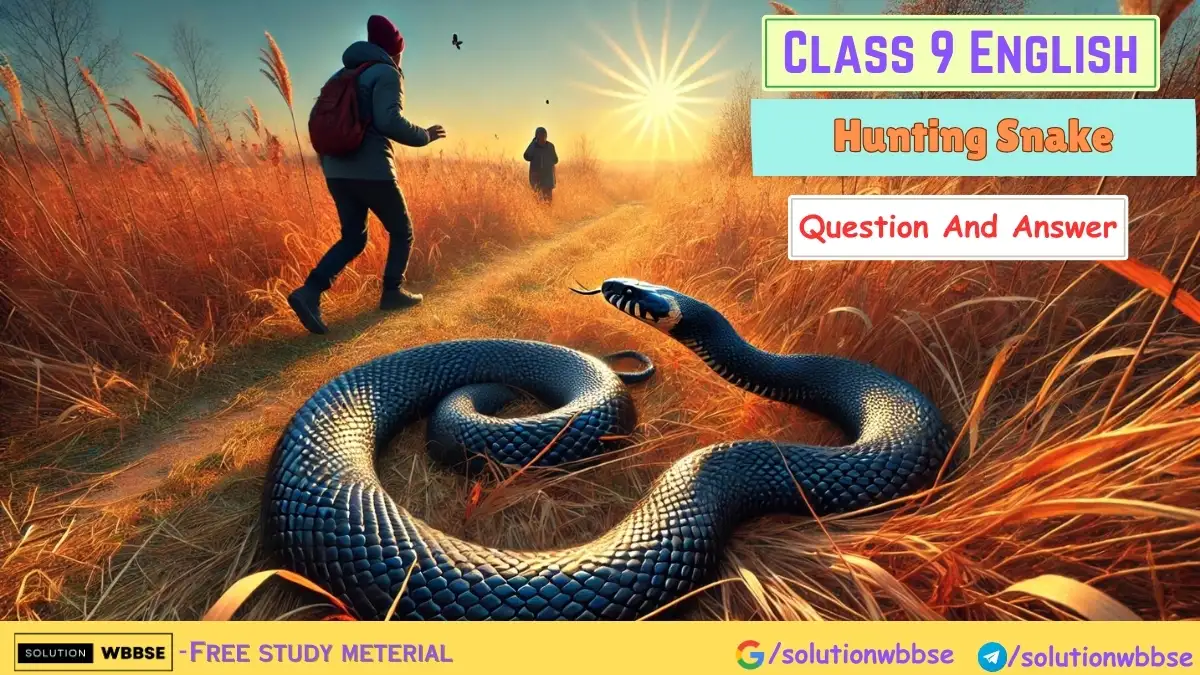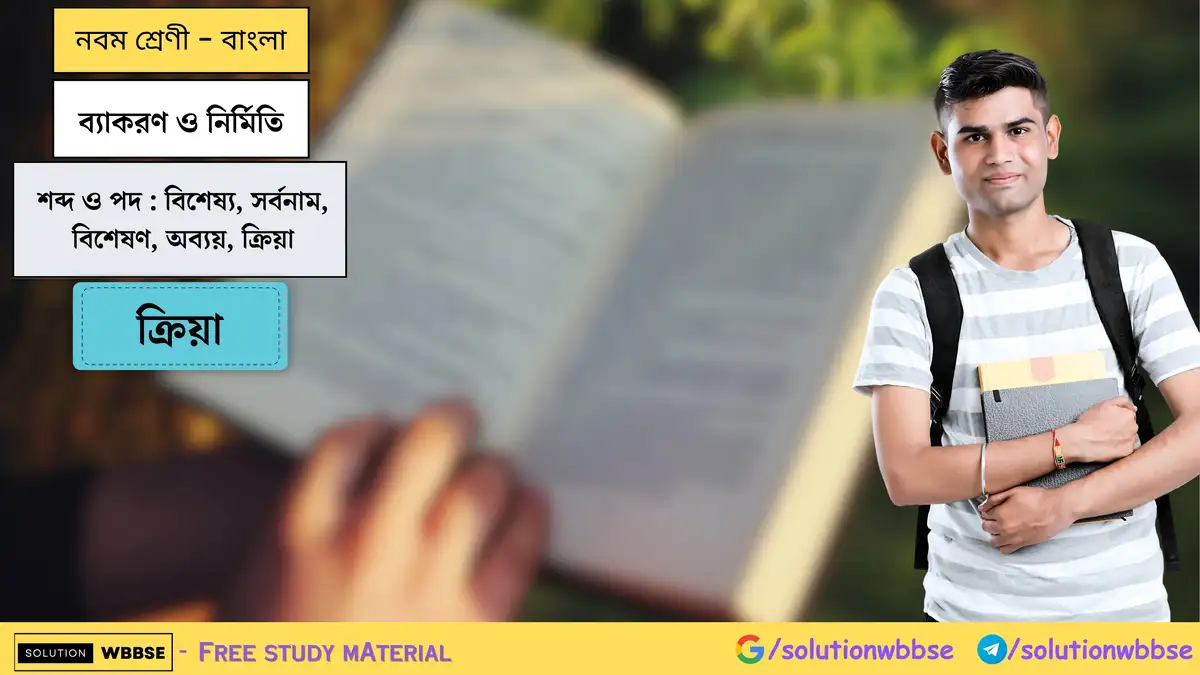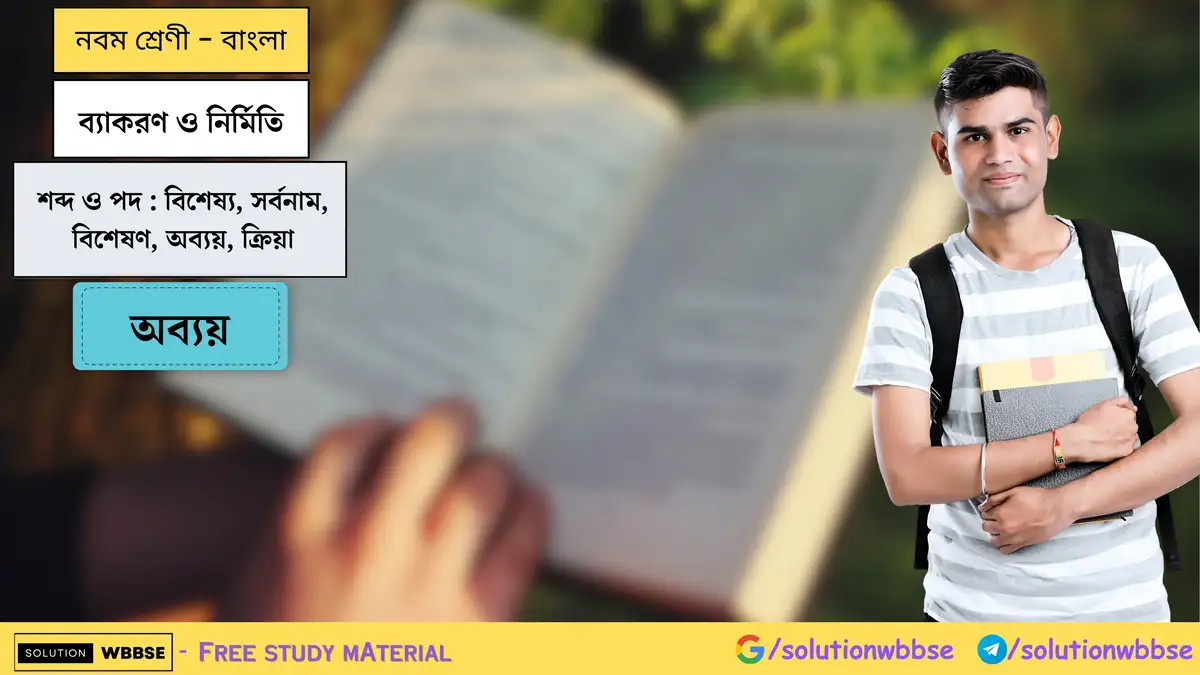আজকের আর্টিকেলে আমরা নবম শ্রেণীর ইংরেজির দ্বাদশ অধ্যায় “Hunting Snake” এর কিছু সংক্ষিপ্ত প্রশ্ন-উত্তর নিয়ে আলোচনা করবো। এই প্রশ্নগুলো নবম শ্রেণীর পরীক্ষার প্রস্তুতির জন্য অত্যন্ত গুরুত্বপূর্ণ। কারণ, এই প্রশ্নগুলো নবম শ্রেণীর পরীক্ষায় প্রায়ই দেখা যায়।

Class 9 – English – Hunting Snake – Short Question And Answer
Which season is mentioned in the poem? (কবিতায় কোন ঋতুর কথা উল্লেখ করা হয়েছে?)
The autumn season is mentioned in the poem. (কবিতায় হেমন্ত ঋতুর কথা উল্লেখ করা হয়েছে।)
Describe the weather as the poet and her companion were taking a stroll. (কবি ও তাঁর সঙ্গীটি যখন পায়চারি করছিলেন সে সময়ের আবহাওয়া বর্ণনা করো।)
The season being late autumn, the weather was sun-warmed with a clear gentle sky and the sun was spreading its light everywhere. (সময়টি হেমন্ত হওয়ায় আবহাওয়া ছিল উষ্ণ, আকাশ ছিল পরিষ্কার ও কোমল এবং সূর্য তার উষ্ণতা ও আলো চারিদিকে ছড়িয়ে দিচ্ছিল।)
What do you mean by the gentlest sky? (‘কোমল আকাশ’ বলতে কী বোঝো?)
The clear cloudless sky of autumn with the sun shining bright and spreading its radiance everywhere is called the ‘gentlest sky’. (হেমন্তের পরিষ্কার মেঘবিহীন আকাশ ও তাতে সূর্যের ঝলমলে আলোর বিকিরণ এই সবকিছু মিলিয়ে ‘কোমল আকাশ’ বলা হয়েছে।)
Where did the poet see the snake? What was she doing then? (কবি সাপটিকে কোথায় দেখেছিলেন? তখন তিনি কী করছিলেন?)
The poet saw the snake in the grassland. She was taking a stroll through the grassland then with her companion. (কবি ঘাসজমিতে সাপটিকে দেখেছিলেন। তিনি তখন সেই ঘাসজমিতে তার সঙ্গীর সঙ্গে পায়চারি করছিলেন।)
What did the poet do immediately on spotting the snake? (সাপটিকে দেখতে পাওয়া মাত্র কবি কী করেছিলেন?)
The poet was leisurely walking with her companion. Immediately on spotting the snake, the poet froze in fear. (কবি তাঁর সঙ্গীর সঙ্গে পায়চারি করছিলেন। সাপটিকে দেখতে পাওয়ামাত্র কবি ভয়ে কাঠ হয়ে গিয়েছিলেন।)
What was the feeling of the poet as she saw the snake? (সাপটিকে দেখে কবির কী অনুভূতি হয়েছিল?)
The poet froze half through her pace and felt breathless on seeing the snake. (কবি অর্ধেক পথ চলতে চলতে সাপটিকে দেখামাত্র ভয়ে কাঠ হয়ে গিয়েছিলেন ও দমবন্ধ অনুভব করেছিলেন।)
How did the snake first appear to the poet? (কীভাবে সাপটি কবির সামনে দেখা দিয়েছিল?)
The great black snake appeared ferocious with his head down, flickering tongue reeling on his quest through the grass. (বড়ো কালো সাপটিকে হিংস্র দেখাচ্ছিল, সে মাথা নীচু করে জিভ লকলক করে এঁকেবেঁকে ঘাসের মধ্যে দিয়ে তার লক্ষ্যের দিকে এগিয়ে যাচ্ছিল।)
How did the snake look under sunlight? (সূর্যের আলোয় সাপটিকে কেমন দেখতে লাগছিল?)
The diamond-shaped scales of the snake were shining under the sunlight. (সূর্যের আলোয় সাপটির হীরকাকৃতি আঁশগুলি চকচক করছিল।)
What was the poet’s attitude towards the snake? (সাপটির প্রতি কবির মনোভাব কী ছিল?)
The poet was frightened, curious, and tensed on seeing the snake but at the same time appreciated the beauty of the snake. (সাপটিকে দেখে কবি ভীত, কৌতূহলী এবং চিন্তিত ছিলেন কিন্তু একই সময়ে সাপটির সৌন্দর্যের প্রশংসা করেছিলেন।)
What is meant by ‘froze half-through a pace’? (স্থানু হলাম পা ফেলার মাঝখানে কথাটির মানে কী?)
This means to suddenly stop one’s movement without completing the steps. Half through her pace, the poet suddenly becomes stiff out of fear on seeing the snake. (এর মানে হঠাৎ করে এগোনোর জন্য পা ফেলতে গিয়ে থেমে যাওয়া। মাঝরাস্তায় কবি ভয়ে কাঠ হয়ে যান এগোতে গিয়ে, সাপটিকে দেখে।)
What is meant by the term ‘reeling’? With what is it associated? (‘রিলিং’ শব্দটির মানে কী? কার সঙ্গে এর সম্বন্ধ?)
‘Reeling’ means moving in curves. The word is associated with the great black snake’s movement. (রিলিং মানে এঁকেবেঁকে চলা। এখানে বড়ো কালো সাপের চলাফেরার সঙ্গে এর সম্পর্ক স্থাপন করা হয়েছে।)
What is meant by ‘flickering’? (ফ্লিকারিং কথাটির মানে কী?)
‘Flickering’ is a term associated with reptiles. It means sudden backward and forward movement. Here it refers to the snake’s tongue. (ফ্লিকারিং মানে উভচর প্রাণীদের ক্ষেত্রে হঠাৎ করে সামনে পিছনে নড়াচড়া, এখানে সাপের জিভের লকলক করা বোঝানো হয়েছে।)
Which hunting features of the snake are mentioned in the poem? (কী কী ‘শিকারি’ বৈশিষ্ট্য এই কবিতায় উল্লিখিত?)
The tongue ‘flickering’ on the trail as the snake moved on his ‘quest’ with ‘fierce intent’ highlights the hunting features of the snake. (সাপ তার হিংস্র অভিপ্রায় নিয়ে লক্ষ্যের পথে যাওয়ার সময় তার জিভ লকলক করে যা সাপটির শিকারি বৈশিষ্ট্যকে প্রকট করে।)
Which words in the poem describe the characteristics of the snake? (কী কী শব্দ সাপের চারিত্রিক বৈশিষ্ট্য বর্ণনা করে?)
The words ‘reeling by’, ‘flickering’, ‘curves’, and ‘fierce intent’ show the slithering nature of the snake as they heighten the creepy feeling. (‘এঁকেবেঁকে’, ‘লকলকে’, ‘বাঁকা’, ‘হিংস্র অভিপ্রায়’ সাপটির মন্থর ভাবভঙ্গিমা দেখিয়ে ভয়ের ভাব জাগিয়ে তোলে।)
What did the poet scarcely think? (কেন কবি ভাবতে পারছিলেন না?)
Seeing the snake, the poet was so mesmerized that she scarcely thought about the track of the snake or the small foods or petty creatures that fled from it. (সাপটিকে দেখে কবি এতটাই মুগ্ধ হয়েছিলেন যে তিনি সাপের পথ বা শিকার বা ছোট প্রাণী যারা সাপটির কবল থেকে পালিয়েছে তাদের কথা ভাবতে পারছিলেন না।)
How did the poet describe the snake? (কবি কীভাবে সাপটির বিবরণ দিয়েছেন?)
The poet described the snake as cold, dark, and splendid, with shining scales on its body whose intent is fierce. (কবি সাপটিকে বর্ণনা করেছেন শীতল, কালো, চমৎকার এবং চকমকে আঁশযুক্ত প্রাণী হিসেবে যার অভিপ্রায় হিংস্র।)
Which sentence shows that the poet was both fascinated and afraid of the snake? (কোন বাক্য দেখায় যে কবি একই সঙ্গে সাপটিকে দেখে মুগ্ধ ও ভীত?)
‘Cold, dark, and splendid he was gone’ — this sentence shows that the poet was afraid of the snake as well as amazed. (শীতল, কালো এবং চমৎকার সে হারিয়ে গেল — এই বাক্যটি দেখায় যে কবি সাপটিকে দেখে একইসঙ্গে মুগ্ধ ও ভীত।)
Where did the snake finally disappear? (কোথায় সাপটি অবশেষে হারিয়ে গিয়েছিল?)
The snake finally disappeared into the grass that hid his prey. (সাপটি অবশেষে ঘাসের মধ্যে অদৃশ্য হয়ে গেল যা তার শিকারকে লুকিয়ে রেখেছিল।)
What is meant by ‘deeper breath of day’? (‘দিনের গভীরতম শ্বাস’ কথার অর্থ কী?)
‘Deeper breath of day’ means inhaling fresh air. Here it means beginning to inhale again as on seeing the snake the poet had become breathless. (‘দিনের গভীরতম শ্বাস’ কথাটি তাজা বাতাস গ্রহণের অর্থ প্রকাশ করে। এখানে এটি বোঝায় যে সাপকে দেখে দম আটকে রাখা কবি আবার শ্বাস নিতে শুরু করেছেন।)
How do we know that the poet is not alone? (কী করে আমরা জানি যে কবি একা নন?)
The word ‘we’ used in the third line of the poem suggests that the poet has a companion. (কবিতার তৃতীয় পঙ্ক্তিতে ‘আমরা’ শব্দটি বোঝায় যে কবির সঙ্গী আছেন।)
Class 9 – English – Hunting Snake – Long Question And Answer
Describe the setting of the poem. (কবিতার পটভূমি বর্ণনা করো।)
The poem begins with the mention of the pleasant sun-bathed season of autumn. The poet and her companion were taking a stroll in the grassland enjoying this weather. (কবিতাটি শুরু হয় হেমন্তের এক কোমল সূর্যস্নাত দিনের উল্লেখ করে। কবি এবং তাঁর সঙ্গী এই সুন্দর আবহাওয়ায় ঘাসজমিতে পায়চারি করছিলেন।)
Why did the poet begin the poem in this way? (কেন কবি এরকমভাবে কবিতা শুরু করেছেন?)
The poet wanted to create a sense of calmness in the beginning before delving into the tensed situation so that the sudden arousal of tension leaves a mark in the readers’ minds. (কবি শুরুতে একটি শান্ত ভাব উত্তেজক পরিস্থিতিতে মগ্ন হওয়ার আগে তৈরি করতে চেয়েছেন যাতে ঘটনার আকস্মিকতা পাঠকের মনে দাগ কাটে।)
Is there any contrast between the beginning and the rest of the poem? (কবিতা শুরুর সঙ্গে বাকি অংশের কি কোনো বিপরীতভাব বা বৈষম্য লক্ষ করা যায়?)
The poem begins in a calm setting. From the third line, there is a contrast in the atmosphere and the incident is set up as the snake gets introduced. (কবিতার শুরু একটি শান্ত আবহে। কিন্তু তৃতীয় পঙ্ক্তি থেকে সাপের আগমনে আবহ ও ঘটনার মধ্যে তীব্র বৈষম্যর সৃষ্টি হয়।)
How did the snake appear as it was moving through the grass? (ঘাসের মধ্যে দিয়ে যাওয়ার সময় সাপটিকে কেমন দেখতে লাগছিল?)
The snake appeared cold, dark, and splendid with the sun glazing over its scales. It moved through the grass with its head down and tongue flickering. (সাপটির আঁশের ওপর সূর্যের আলো ঝলমল করছিল, আর সাপটিকে শীতল, কালো ও চমৎকার দেখতে লাগছিল। সে তার মাথা নীচু করে জিভ লকলক করতে করতে ঘাসের মধ্যে দিয়ে যাচ্ছিল।)
What did the poet and her companion do when the snake was gone? (সাপটি চলে যেতে কবি ও তাঁর সঙ্গী কী করেছিলেন?)
When the snake was gone, the poet and her companion expressed a sigh of relief. Then they looked at each other and went on. (সাপটি চলে যেতে, কবি ও তাঁর সঙ্গী দীর্ঘশ্বাস ফেললেন। তারপর তারা একে অপরের দিকে দেখে আবার চলতে লাগলেন।)
What does ‘What small food fled from his fierce intent’ indicate? (‘কী ক্ষুদ্র খাবার পালিয়ে বাঁচে দূরে রেখে তার হিংস্র অভিপ্রায়’ — পঙ্ক্তিটির মানে কী?)
This line indicates the snake’s power and hunting skills. The snake is so skilled in hunting that other animals keep away from its track. (সাপটির শক্তি ও শিকারের দক্ষতা এই পঙ্ক্তিটি নির্দেশ করে। সাপটি শিকারে এতটাই দক্ষ যে অন্য প্রাণীরা তার পথ থেকে দূরে সরে থাকে।)
The poet followed the snake with her eyes — What does this show? (কবি সাপটিকে তাঁর চোখ দিয়ে অনুসরণ করেছিলেন। এর মানে কী?)
This line shows that the poet was so petrified by the hunting snake that she froze with fear and kept a constant stare at its movement. (এই পঙ্ক্তি দেখায় যে কবি শিকারী সাপটিকে দেখে এতোটাই ভীতসন্ত্রস্ত হয়ে পড়েছিলেন যে ভয়ে কাঠ হয়ে তিনি স্থিরদৃষ্টিতে তাকিয়েছিলেন।)
What is the poem about? (কবিতাটি কী নিয়ে?)
The poem may seem a simple one describing the hunting power of a snake. Along with that, it highlights the beauty of the snake and also its killer instinct and the threat it represents to humans. (কবিতাটি খুবই সাধারণ লাগতে পারে যা সাপের শিকারের ক্ষমতা বর্ণনা করেছে। তার সঙ্গে এটি সাপের সৌন্দর্য ও ক্ষিপ্রতা এবং মানুষের প্রতি বিপদের প্রতিক হিসেবে তুলে ধরে।)
What does the word ‘quest’ suggest? (‘কোয়েস্ট’ শব্দটির মানে কী?)
The literal meaning is ‘searched’. This word brings in a sense of adventure and violence in this poem. The snake goes hunting and is violent enough to kill its prey thereby proving its prowess. (আক্ষরিক অর্থে ‘কোয়েস্ট’-এর মানে হল ‘যা সন্ধান করা হয়েছে’। এই শব্দটি একটি রহস্য ও হিংসার ভাব তুলে ধরে। সাপটি শিকারে বেরিয়েছে এবং সে প্রাণীহত্যা করার ক্ষেত্রে যথেষ্ট হিংস্র যা তার পরাক্রম প্রমাণ করে।)
Which words suggest that the poet was fascinated by the snake? (কোন শব্দ বা শব্দগুচ্ছ বোঝায় যে কবি সাপটিকে দেখে মুগ্ধ?)
The poet has used two words ‘diamond’ and ‘splendid’ to show her fascination for the snake. ‘Diamond’ indicates the breathtaking beauty of the snake and ‘splendid’ indicates its majestic power. (কবি ‘হীরক’ এবং ‘জমকালো’ এই দুই শব্দ ব্যবহার করেছেন সাপের প্রতি তাঁর মুগ্ধতা প্রকাশ করতে। ‘হীরক’ সাপের চোখ ধাঁধানো সৌন্দর্যকে নির্দেশ করে আর ‘জমকালো’ নির্দেশ করে তার রাজকীয় ক্ষমতা।)
Why did the poet use the word ‘froze’? (কেন কবি ‘নিথর’ শব্দটি ব্যবহার করেছেন।)
The poet wanted to show the element of surprise and fear that made them stop abruptly. They did not have time to think or finish their action and so stopped or froze in the middle of it. (কবি সেই চমক ও ভয়কে প্রকট করতে চেয়েছেন যে চমক তাঁদের আচম্বিতে থামিয়ে দিয়েছে। তাঁদের কাছে কিছু ভাবা বা করার সময় ছিল না এবং তাই তাঁরা পা ফেলার মাঝেই ‘স্তম্ভিত’ বা ‘নিথর হয়ে গিয়েছিলেন।)
How appropriate is the title? (নামকরণ কতটা যথার্থ।)
The poem deals with the snake’s prowess and hunting skills. Small animals know well to stay away from its trail. Even human beings freeze on seeing it. So the title is appropriate. (কবিতাটি সাপের পরাক্রম এবং শিকারের দক্ষতা বোঝায়। ছোটো জন্তুরা জানে যে এই সাপের পথ থেকে দূরে থাকতে হয়। এমনকি মানুষও তাকে দেখে নিথর হয়ে যায়। অতএব শিরোনাম যথার্থ।)
How are ideas juxtaposed in the phrase ‘cold, dark and splendid’? (কীভাবে ভাবনাগুলি ‘শীতল, কালো আর জমকালো’ শব্দগুচ্ছের মধ্যে সাজানো হয়েছে?)
Cold suggests death, whereas dark suggests evil. Both are found in the snake. But it is majestic as well as skilled, so ‘splendid’ is used to create that sense of awe. (‘শীতল’ মানে মৃত্যু, আবার ‘কালো’ বা ‘অন্ধকার’ মানে অশুভ। দুটিই সাপটির মধ্যে বর্তমান। কিন্তু এটি রাজকীয় এবং দক্ষও। তাই ‘জমকালো’ এই চমকৃত ভাবটির প্রকাশ করার জন্য ব্যবহার করা হয়েছে।)
What is the idea generated by the poem? (এই কবিতার মধ্য দিয়ে কী ভাব প্রকাশ পায়?)
Man’s position when he meets nature is the central idea of the poem. When man meets nature, who is actually superior comes to the forefront. It is a snapshot of life that contains fear and awe for nature at the same time. (এই কবিতার মূল ভাবনা হল প্রকৃতির সান্নিধ্যে মানুষের অবস্থান। যখন মানুষ প্রকৃতির সম্মুখীন হয়, কে আসলে বেশি শক্তিশালী তা প্রকাশ পায়। এটি জীবনের একটি ঝলক যা প্রকৃতির জন্য ভয় ও বিস্ময় একইসঙ্গে ধরে রাখে।)
Describe the appearance of the snake. (সাপটির রূপ বর্ণনা করো।)
Here the poet presents the snake as a great black reptile with its flickering tongue and fierce intent. Its diamond scales shining under the sun’s rays; it looks cold, dark, and splendid giving rise to a sense of awe and fear at the same time. (এখানে কবি সাপকে দেখিয়েছেন একটি বড়ো কালো সরীসৃপ প্রাণী হিসেবে, যার জিভ লক্লক্ করছে ও অভিপ্রায় হিংস্র। তার হীরকাকৃতি আঁশ রোদে ঝলমল করছে, তাকে দেখতে লাগে শীতল, কালো এবং জমকালো, যা একইসঙ্গে বিস্ময় ও ভয়ের উদ্রেক ঘটায়।)
What did the poet do until the snake disappears? (সাপটি চলে না যাওয়া অবধি কবি কী করছিলেন?)
The sight of the snake made the poet freeze out of fear. She forgot to breathe and followed it with her eyes only. Finally, she heaved a sigh of relief as the snake disappeared. (সাপটিকে দেখামাত্র কবি ভয়ে নিথর হয়ে গিয়েছিলেন। তিনি শ্বাস নিতেও ভুলে গিয়েছিলেন এবং সাপটিকে চোখ দিয়ে অনুসরণ করছিলেন। অবশেষে তিনি স্বস্তির নিঃশ্বাস ফেলেছিলেন যখন সাপটি অদৃশ্য হয়ে গিয়েছিল।)
আজকের আর্টিকেলে আমরা নবম শ্রেণীর ইংরেজির দ্বাদশ অধ্যায় “Hunting Snake” এর কিছু অতিসংক্ষিপ্ত প্রশ্ন-উত্তর নিয়ে আলোচনা করেছি। এই প্রশ্নগুলো নবম শ্রেণীর পরীক্ষার জন্য অত্যন্ত গুরুত্বপূর্ণ, কারণ এগুলো নবম শ্রেণীর পরীক্ষায় প্রায়ই দেখা যায়। আশা করি, এই আর্টিকেলটি আপনাদের জন্য উপকারী হয়েছে। আপনারা যদি কোনো প্রশ্ন বা অসুবিধার সম্মুখীন হন, তাহলে টেলিগ্রামে আমার সঙ্গে যোগাযোগ করতে পারেন, আমি উত্তর দেওয়ার চেষ্টা করবো। এছাড়া, নিচে এই পোস্টটি আপনার প্রিয়জনদের সঙ্গে শেয়ার করুন, যাদের এটির প্রয়োজন হতে পারে। ধন্যবাদ।






মন্তব্য করুন